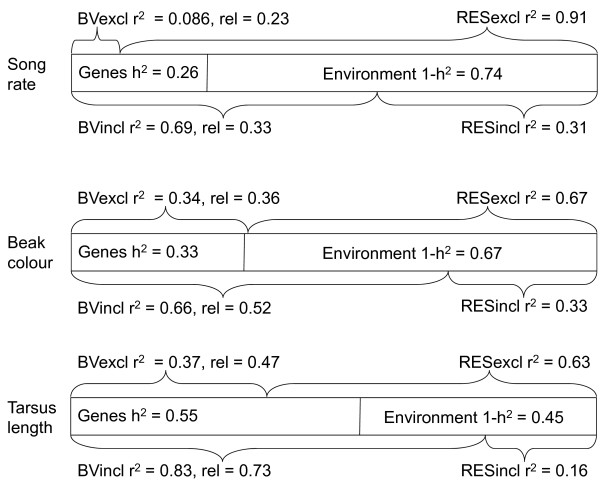Figure 3.
The animal model approach divides the variation of a trait into a genetic (breeding value, BV) and an environmental (residual) component. However, if the BV of a focal individual is calculated with the knowledge of the individual's phenotype, this BV (BVincl) will contain some part of the individual specific environmental component in addition to the genetic component. This can be remedied by excluding the focal individual's phenotype from the data file while calculating its breeding value (BVexcl). However, due to the loss of information the BV then reflects only part of the genetic variation. The figure illustrates how the genetic and environmental components of the three traits (song rate, beak colour and tarsus length) are represented by the two types of BVs and their corresponding residuals (RESincl and RESexcl, respectively). r2 values refer to the amount of the total phenotypic variance that is explained by the BV or RES in question. 'rel.' refers to the reliability (see main text) of the estimated BVs. Note that due to the unreliability of the estimation of BVs even the RESincl will reflect some additive genetic effects and both the BVincl and BVexcl will not capture the entire additive genetic component and will also reflect some environmental effects. Thus, the figure represents a simplified view of how the estimated BVs and RESs reflect the genetic and the environmental components, respectively.

